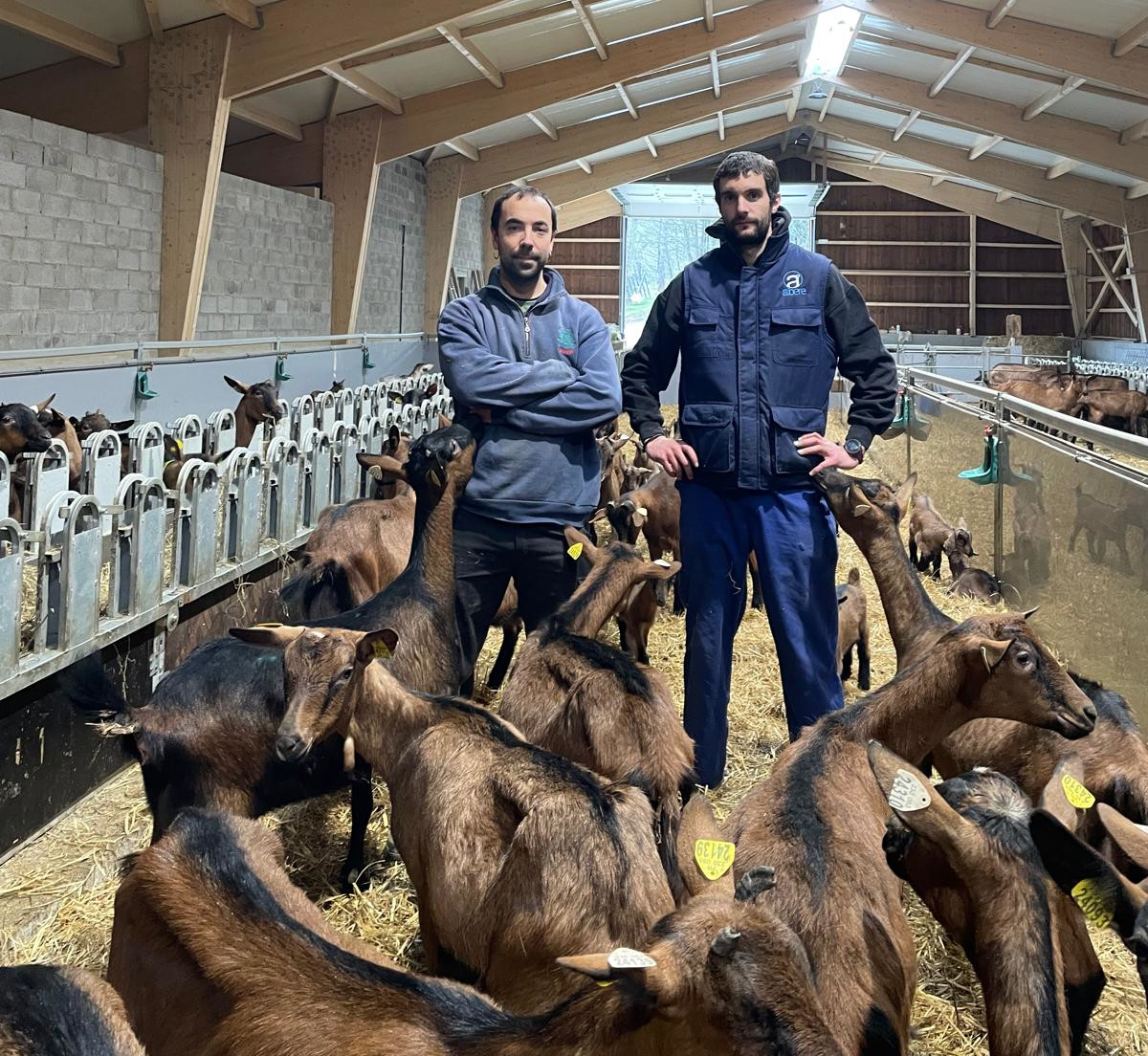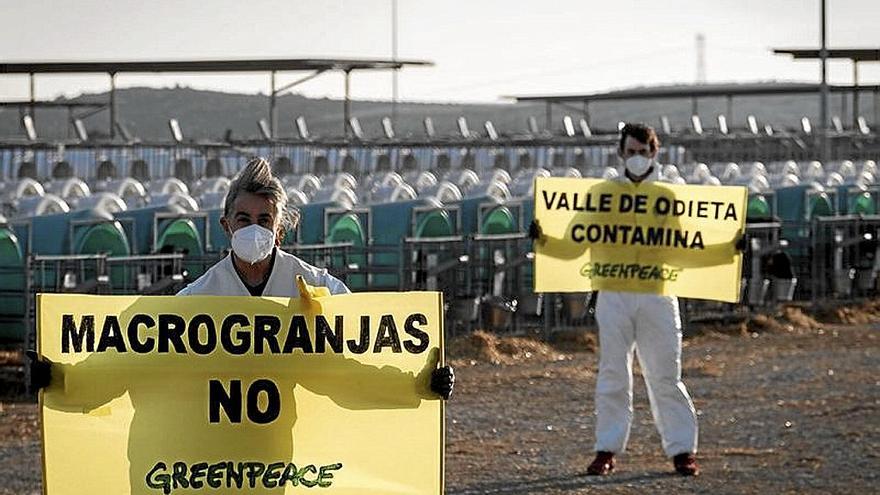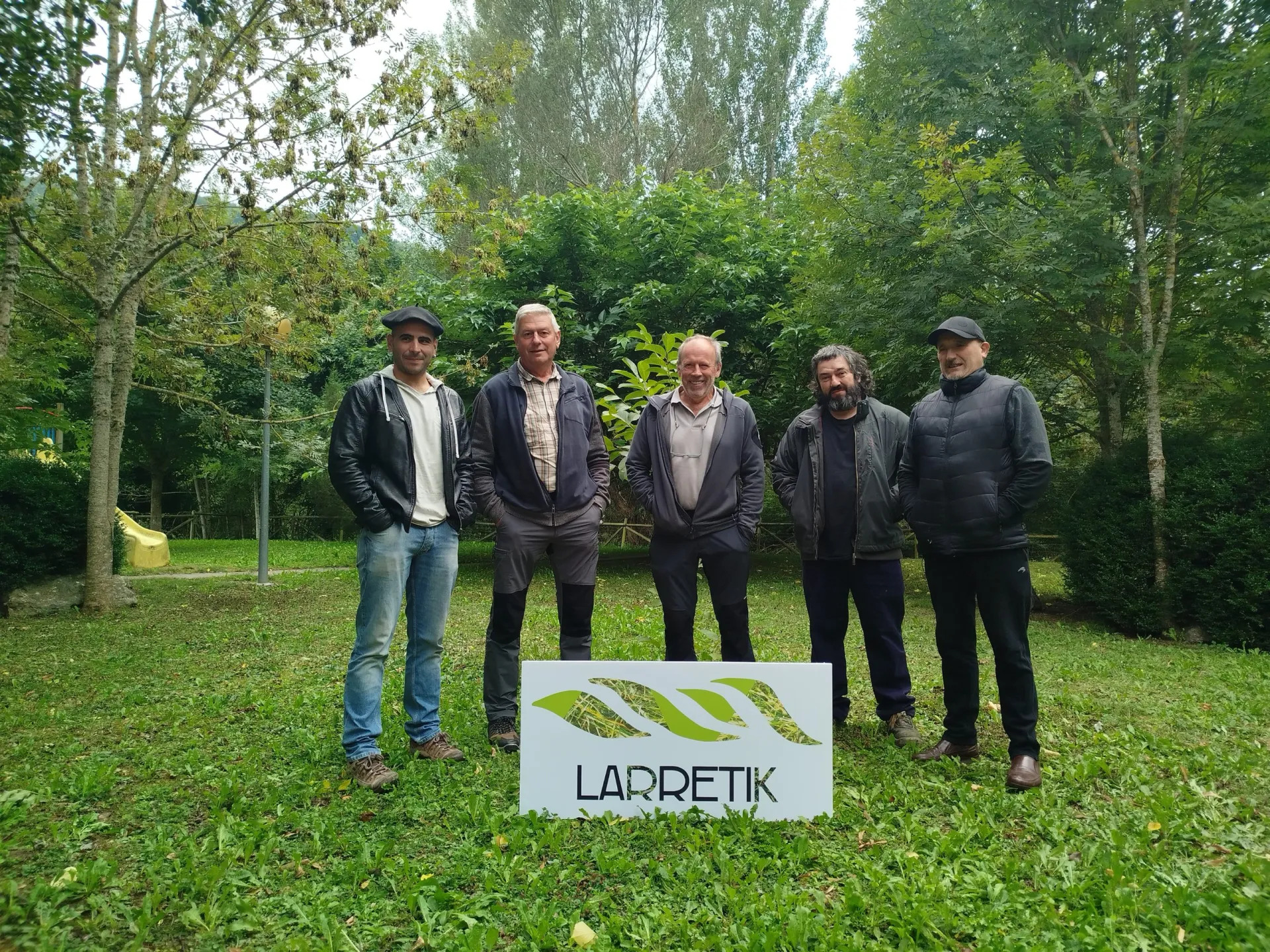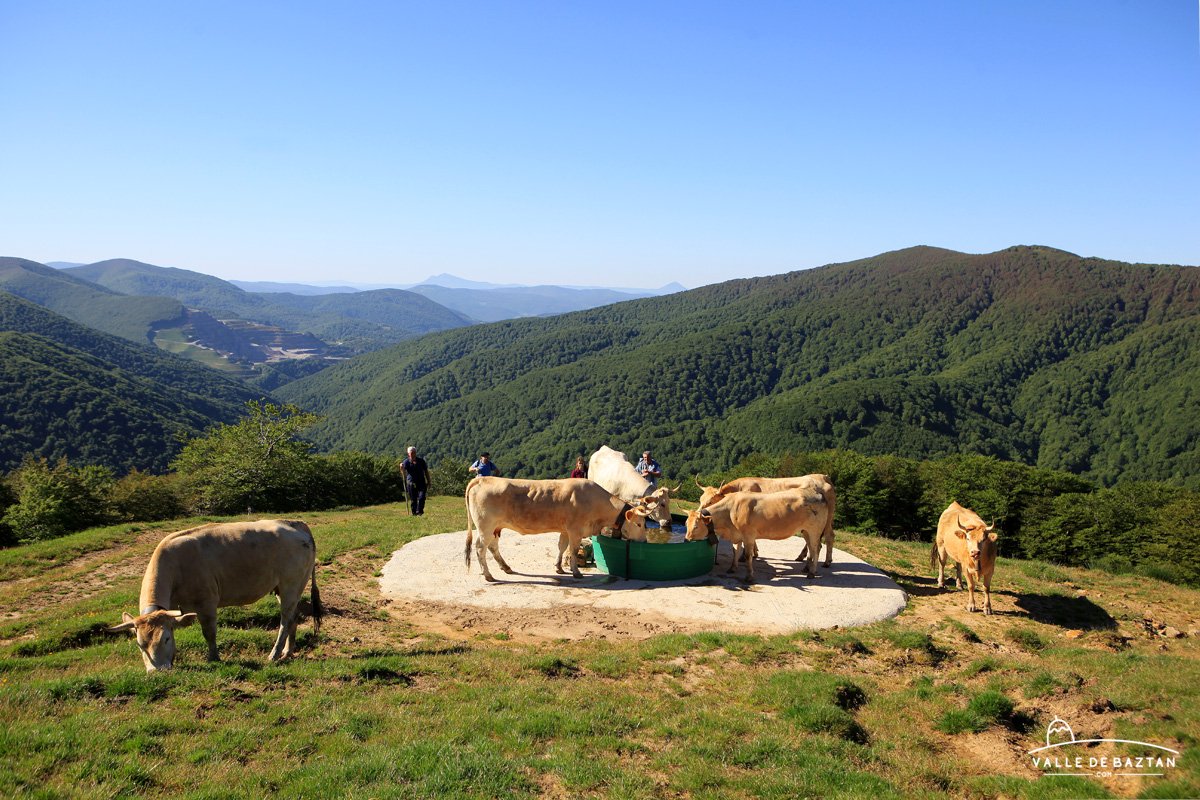"The macro-group Valle de Odieta will continue to generate serious environmental problems"
- This is what the members of the Navarre Coordinator against the Macro-Farms consider, so this Monday morning they presented in Pamplona claims to the new treatment plant that the company wants to build in Caparroso, on the portal of the Department of Rural Development and the Environment.

The Coordinator explains that the exploitation of Caparroso has been authorized to maintain about 3,500 cows, until recently the Government of Navarra has extended the authorization to 7,500. Many livestock waste is generated in the process of exploitation, aggravating the problems of soil, aquifers and water courses.
It is a new sewage treatment plant to treat these wastes, in order to generate contaminated water from current processes, in the belief that it will generate water of sufficient quality to irrigate agricultural land. However, the Coordinator considers that this is a very complex process, which often does not work well and which, in essence, does not see that a negative environmental impact would be avoided in this way.
That's why they say that "the only solution to environmental, social and economic problems is to reduce the livestock burden, to change the model." It is precisely for this reason that they urge the Ministry of the Environment not to allow any change in the Integrated Environmental Authorization, as the Valle de Odieta company claims.
Lower electricity generation
Hybridization Termosolar Navarra, S.L., a subsidiary of the former, works in the biodigestion of organic waste (purines) generated by the macro-farm, together with waste from other companies and man-communities of urban waste. This process generates biogas, fuel used for electricity generation, and a large amount of liquid waste.
In the words of the coordinator, although the operation has increased considerably, the treatment infrastructures remain the same, so that waste will take less time than it should in existing deposits, which will result in a reduction in biogas, also reducing gas production.
From the treatment of all the residues a final residue called digestate is generated and denounce that the mass balances of the project presented are poorly made. They say that the sewage treatment plant has been dimensioned for a lower amount of waste than authorized, so that "there have been problems of purification".
Slurry control problems
These kinds of giant farms need a lot of water, both for cows to drink and for other processes. The Coordinator explained that "in 2021 the Ebro Hydrographic Confederation granted the necessary water for 3,450 cows. In 2019 the macrofarm had 7,373 cows and calves, so it can be concluded that the farm still has no concessions to supply all cows with water."
In addition, there are slurries, that is, the final liquid that comes out of the treatment of beef residues and that in the conventional one is used to fertilize the soils. In principle, as explained in the allegations, this process would be a process similar to that to be used in an urban waste treatment plant, but due to their high nitrogen load, they are much more polluting than they are. Removing this nitrogen load is "difficult, expensive and also dangerous."
Problem of mixing waste
But in addition to the treatment difficulties, there are also difficulties in marketing the final product. Due to the mixture of purines and urban waste coming from abroad, "the latter cannot be guaranteed its composition and, therefore, it is very difficult to authorise its sale".
The platform denounces that irrigation water would be the most important product that would be obtained as a result of this process, but "surprises the lack of information about its quality in the project. The parameters presented are adequate for the discharge into public water, but are not adequate for its evaluation as irrigation water".
Saltwater for saltwater?
It is also necessary to see whether the characteristics of the soils and waters are compatible: the sewage treatment plants tend to be salted and it is problematic to irrigate with them land that is of saline origin. This would be the case for the land of the Bardenas that is to be watered.
One of the last observations concerns the solid waste generated by the treatment plant. For its management it is essential to present the estercolero plan and have not yet done so: "It should be borne in mind that most of the land in which these materials are to be spread is in areas vulnerable to nitrate pollution, and strict control of fertiliser applications is necessary." Anyone who wants more information on the subject will find it on the website of the Subai Erakuntza Foundation.
At the end of March, the company Valle de Odieta called fourteen associations against the macroines to court for understanding that they have soiled the company’s name. The coordinators have explained this Monday that they will not die and will continue against this livestock model.
Ubidekoak (Bizkaia) dira Imanol Iturriotz eta Aritz Bengoa gazteak. “Lagunak gara txikitatik, eta beti izan dugu buruan abeltzaintza proiektu bat martxan jartzeko ideia”, azaldu du Iturriotzek. Nekazaritzari lotutako ikasketak izan ez arren, baserri munduarekin eta... [+]
Iruñean bizi ziren Iñaki Zoko Lamarka eta Andoni Arizkuren Eseberri gazteak, baina familiaren herriarekin, Otsagabiarekin, lotura estua zuten biek betidanik. “Lehen, asteburuetan eta udan etortzen ginen eta duela urte batzuk bizitzera etorri ginen”, dio... [+]
Livestock workers seek a balance between the optimal quality of life of animals and the economic viability of production. Human beings have placed many physical limitations on the world to protect what is “our”, to protect our animals from external threats: foxes, wolves and... [+]
After a curving road we reached this vast plain. Behind all the shades of green that the fall offers, as a curtain, you saw the white and white Pyrenees. So we discovered Abaurregaina, the highest town in Euskal Herria. Next to the road, we visited the Bilobila project on a... [+]


















